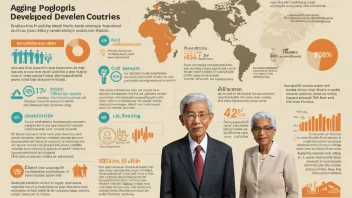Public health is a multifaceted field that significantly influences the well-being of communities and populations. At the heart of effective public health strategies lies the intricate relationship between policy and health outcomes. Understanding how policy decisions affect public health can empower citizens, inform leaders, and ultimately enhance the quality of life for all. In this article, we will explore five key ways in which policy shapes public health outcomes, highlighting the importance of thoughtful governance in promoting health equity and improving population health.
1. Regulation of Health Behaviors
Policies play a crucial role in regulating behaviors that impact public health. These regulations can take various forms, including:
- Tobacco Control Policies: Laws that restrict smoking in public places and impose taxes on tobacco products have proven effective in reducing smoking rates.
- Nutrition Labeling: Mandating clear labeling on food products helps consumers make informed dietary choices, promoting healthier eating habits.
- Seatbelt Laws: Implementing and enforcing seatbelt use laws has significantly decreased fatalities and injuries in car accidents.
By shaping individual behaviors, these policies contribute to broader public health goals and reduce the burden of preventable diseases.
2. Access to Healthcare Services
Access to healthcare is a fundamental aspect of public health, and policies directly influence who can receive care and how easily. Key factors include:
- Insurance Coverage: Expanding Medicaid and implementing the Affordable Care Act have increased access to healthcare for millions of Americans, particularly low-income populations.
- Community Health Centers: Policies that fund and support community health centers ensure that underserved populations have access to essential services.
- Telehealth Initiatives: Recent policy shifts have expanded telehealth services, making healthcare more accessible, especially in rural areas.
By improving access to healthcare services, policies help reduce health disparities and promote overall community health.
3. Funding for Public Health Programs
Investment in public health programs is critical for addressing health challenges and improving population health. The impact of funding can be seen in:
- Preventive Services: Funding for vaccination programs and screenings can lead to early detection and prevention of diseases.
- Health Education: Policies that allocate resources for health education initiatives empower communities with knowledge about healthy behaviors.
- Research Grants: Government and private funding for public health research drives innovation and the development of new strategies to combat health issues.
By prioritizing funding for public health programs, policymakers can significantly enhance health outcomes and foster healthier communities.
4. Environmental Health Regulations
Environmental factors play a significant role in public health, and policies aimed at protecting the environment can lead to better health outcomes. Consider the following:
- Air Quality Standards: Regulations that limit emissions from industries and vehicles can reduce respiratory diseases and improve overall public health.
- Water Safety Regulations: Policies ensuring clean drinking water and safe sanitation practices are essential for preventing waterborne diseases.
- Land Use Policies: Urban planning policies that promote green spaces and reduce pollution contribute to improved mental and physical health.
By addressing environmental determinants of health, policies can create healthier living conditions and ultimately enhance public health.
5. Promoting Health Equity
Health equity is a vital goal of public health, and policies that address social determinants of health are essential for achieving it. Important strategies include:
- Targeted Interventions: Policies that focus on high-risk populations can help reduce health disparities and ensure that all individuals have the opportunity to achieve good health.
- Community Engagement: Involving communities in the policymaking process ensures that diverse voices are heard and that policies reflect the needs of those most affected.
- Addressing Systemic Barriers: Policies aimed at dismantling systemic barriers to healthcare access, such as transportation and economic challenges, are crucial for promoting health equity.
By prioritizing health equity in policymaking, we can create a healthier future for all individuals, regardless of their background.
In conclusion, the intersection of policy and public health is a dynamic and critical area of study that shapes the health outcomes of populations. By regulating health behaviors, improving access to healthcare, funding public health programs, enforcing environmental regulations, and promoting health equity, policymakers can significantly influence the well-being of communities. Understanding these connections empowers individuals to advocate for policies that prioritize public health and foster healthier environments for everyone.






